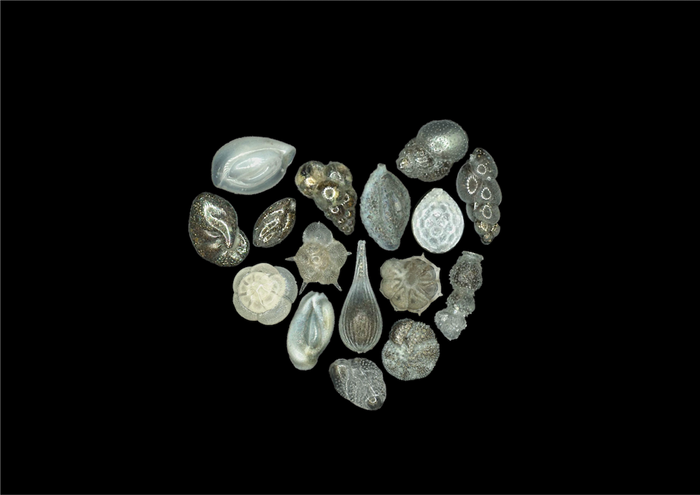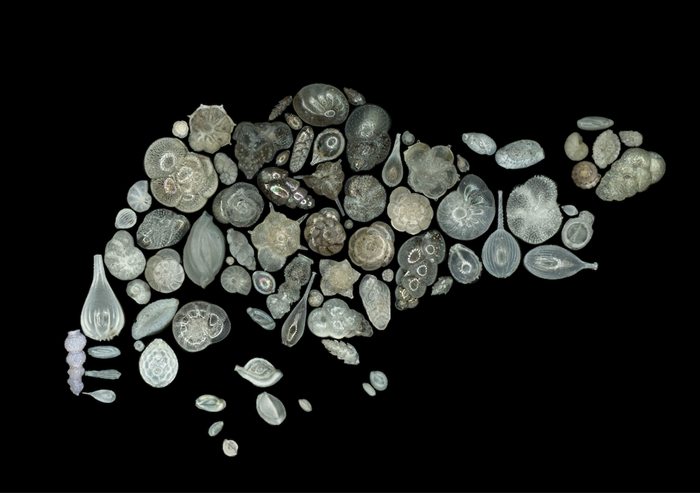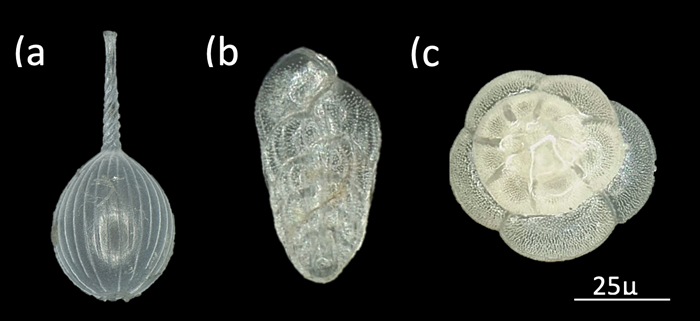Some are round, some are elongated, and their colours vary from off-white to shades of grey, but they all come from the seafloor of Singapore dating back to 10,000 years ago. Tiny shells, remnants of long-dead organisms, were carefully picked and arranged to compose beautiful award-winning photographs.
Ms Yu Ting Yan, a PhD candidate working with the Coastal Lab from the Earth Observatory of Singapore (EOS), was recently recognised for two beautiful photographs featuring microscopic shells from Singapore.
 A showcase of nature’s meticulous design skills – microscope images of tropical benthic foraminifera from the ancient sea floor off Singapore (Source: Yu Ting Yan/Earth Observatory of Singapore)
A showcase of nature’s meticulous design skills – microscope images of tropical benthic foraminifera from the ancient sea floor off Singapore (Source: Yu Ting Yan/Earth Observatory of Singapore)
Her image of a perfect heart-shaped assemblage of shells was selected as a winner of the 2020/21 Microfossil Image Competition organised by The Micropalaeontological Society (TMS). Twelve winning images are showcased in the 2021 calendar produced by TMS. Another image she took of shells, which featured an intricate arrangement in the shape of our little red dot, won the Merit award of the 2020 Art Competition organised by Nanyang Technological University’s College of Science.
 Flagging Forams: This is part of a fossil foraminifera collection that Yu Ting has identified from ancient seafloor sediments in Singapore (Source: Yu Ting Yan/Earth Observatory of Singapore)
Flagging Forams: This is part of a fossil foraminifera collection that Yu Ting has identified from ancient seafloor sediments in Singapore (Source: Yu Ting Yan/Earth Observatory of Singapore)
The shells featured in these images are formed by single-celled organisms called benthic foraminifera. After the foraminifera died, the shells sank into the seafloor and were preserved in the sediments. They are about 50 to 200 micrometres across, which is about the diameter of a human hair.
It was while working under a microscope to record and identify the types of foraminifera in a sediment core from the Kallang River Basin that Yu Ting came up with the idea for the images. “I was amazed by the different shapes and diversity of the foraminifera shells,” she said.

The type of foraminifera can be identified by the number and arrangement of the chambers. (a) Example of a foraminifera with only one chamber. (b) Example of a foraminifera with multiple chambers in a biserial arrangement. (c) Example of a foraminifera with a trochospiral arrangement where chambers are added in spiral (Source: Yu Ting Yan/Earth Observatory of Singapore)
Not only are these shells beautiful, they also help us understand past climates.
Foraminifera form these shells by using carbon and oxygen from the aquatic environment around them in a process called calcification. “As foraminifera grow, they record the ancient environmental conditions such as water temperature and salinity. By studying and analysing the foraminifera shells that are present in the sediments, we can therefore reconstruct their past environmental history,” Yu Ting explained.
She is currently looking at the shell chemistry of species found in coastal environment, such as Asterorotalia trispinosa, to understand how global climate events are recorded in Singapore’s Kallang River Basin. As these species are present throughout the entire sediment core, they can provide a continuous high-resolution record. “The record will be used to indicate the climate variability in the region from approximately 6,000 to 9,000 years ago, a period called the early Holocene,” she said.
As part of her PhD, she also plans to identify and study species diversity of foraminifera from the sediment core, and to investigate how the foraminifera assemblages have changed in the early Holocene.
We would like to congratulate Yu Ting for her two awards and we look forward to sharing the results of her analyses.